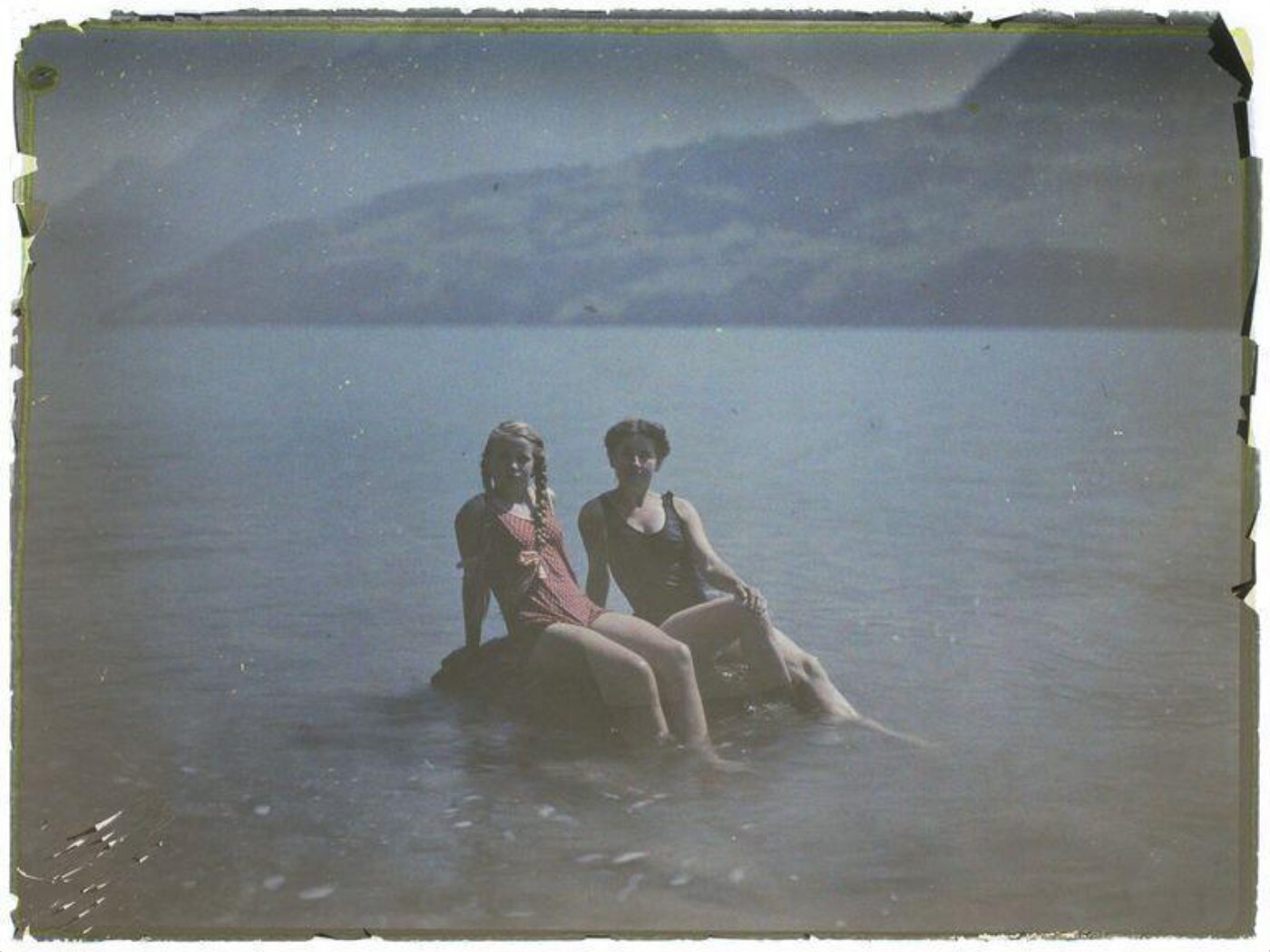Elsewhere, we have discussed the history and materiality of an autochrome, and how these plates can be identified. Here, we look at how these fragile objects can be damaged, and how this damage is observed.
One of the key issues around the stability and preservation of autochromes is their light sensitivity. This is of particular note, as the main method used to view an original autochrome involves transmitted light. Today, autochromes are rarely exhibited because of the damage caused by light exposure. There are, however, a number of other factors that can also contribute to an autochrome’s deterioration as shown through damage including fading, broken glass, greening and silvering. We will explore some of these here.
Fading
The dyes used to make an autochrome’s colour screen layer are very light sensitive, meaning that light exposure can lead to fading. This can significantly alter the appearance of the plate. Many autochrome plates may already display evidence of light damage – because of the way they were historically shown or stored.

Broken glass
Careful handling of autochromes is necessary to avoid breakages and potentially irreparable damage. It is possible to replace broken cover glass so that the autochrome’s surface remains protected, but there may be historical information on the original cover glass that is important to the object.

Cover glass provides vital protection for the emulsion and colour screen which make up the image on the autochrome plate. If the cover glass is broken or missing, dirt, dust, moisture and pollutants can access the autochrome surface and potentially cause serious disfiguration.
Cracking and delamination of emulsion
Heat can cause cracking and delamination, or the peeling of the emulsion layer (which sits on top of the colour layer on the plate). Changes in temperature and humidity can also lead to this type of damage. In these cases, the presence of a cover glass that is well sealed to the autochrome plate is vital to reduce the possibility of any lifting emulsion being moved, damaged or lost.

Silver mirroring, oxidation and water damage
Atmospheric pollutants and moisture ingress can cause a number of issues in autochrome plates. Intact, well-sealed cover glass should help protect the image layers from the effects of external agents, but some autochromes may be cracked or have missing cover glass that can result in the several issues.
Silver mirroring, seen as a silvery/blue haze in the shadows or dark areas of the image, can occur if the image surface is exposed. In extreme cases silver mirroring can make image details hard to read. Oxidation, seen as an overall discolouration of the image, can also occur if the plate is exposed to atmospheric pollutants. Sometimes, red and/or orange spots are evident on the image, and this again may be a result of exposure to pollution.


The dyes used to colour the starch granules are also water sensitive. The green dye is particularly vulnerable and can bleed into other areas of the image if moisture is able to penetrate. This is another reason for the protective cover glass and sealing tape.

Plates that have been badly affected by water (for example from flooding) may display more extreme damage in the form of delamination, wrinkling, mould damage and areas of loss.

PERCEIVE is working to further understand these types of damage through imaging techniques and scientific analysis. In undertaking this research, we can form a greater understanding of how autochromes are damaged, to better care for them into the future.


